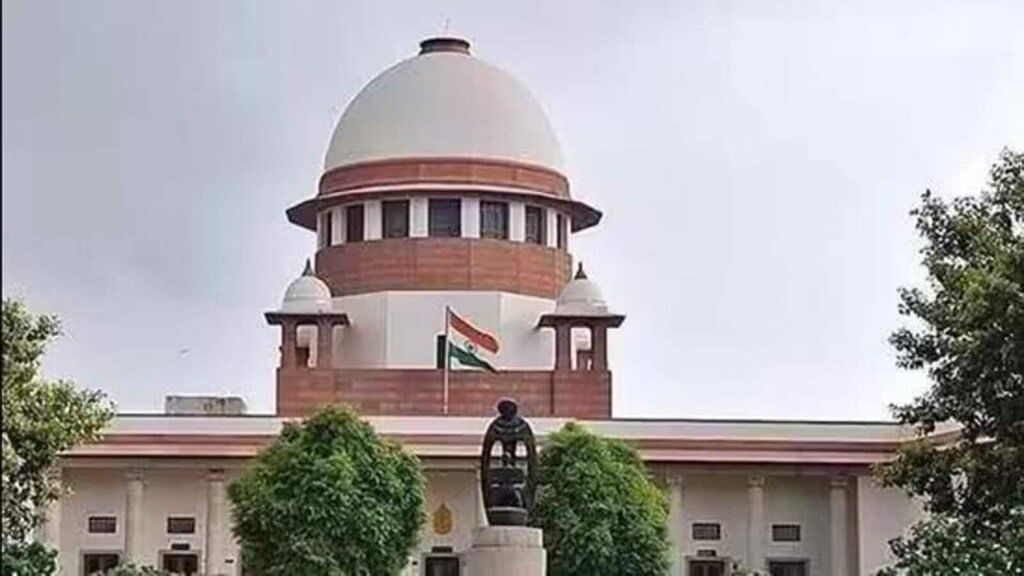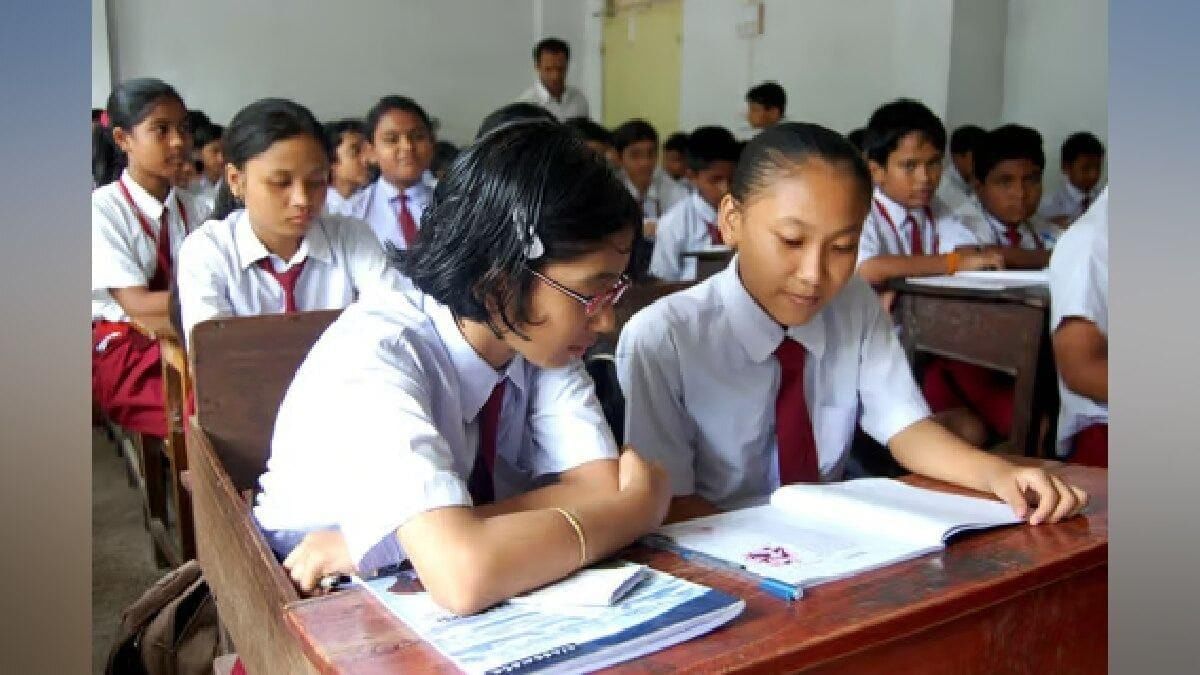UPSC Daily Current Affairs: 19th June 2025 | Current Affairs & Hindu Analysis: Daily, Weekly & Monthly PDF Download
GS2/International Relations
Legality of Israel's Strikes on Iran
Why in News?
Israel's recent military strikes against Iran have raised significant legal questions regarding their permissibility under international law. The evaluation focuses particularly on Articles 2(4) and 51 of the UN Charter, alongside the evolving doctrines of self-defence.
Key Takeaways
- The UN Charter prohibits the use of force in international relations under Article 2(4).
- Article 51 allows for self-defence only in response to an armed attack.
- Israel claims a right to pre-emptive self-defence due to Iran's nuclear advancements.
- The Caroline Doctrine sets strict conditions for lawful pre-emptive actions.
Additional Details
- Prohibition under the UN Charter: Article 2(4) prohibits the use of force in international relations, while Article 51 allows for self-defence, conditioned by necessity and proportionality.
- Self-defence Definition: According to Marko Milanovic, self-defence applies only when an actual armed attack occurs, which, in Israel's case, has not been demonstrated against Iran.
- Pre-emptive Self-defence: Israel argues that the threat from Iran's nuclear capabilities justifies pre-emptive action; however, this interpretation lacks support under Article 51, which necessitates an ongoing or imminent attack.
- Caroline Doctrine: Established during the Caroline incident of 1837, it outlines that pre-emptive action must be necessary, immediate, and proportionate.
- Imminence Interpretation: There are two views: a narrow interpretation sees imminence as a temporal proximity to an attack, while a broad interpretation includes hypothetical future threats. The legal preference favors the narrow view to prevent abuse by powerful states.
In conclusion, Israel's military strikes against Iran, lacking proof of an imminent armed attack, do not fulfill the stringent criteria for lawful self-defence under international law and may be viewed as acts of aggression. Upholding the UN Charter and established legal principles is essential to maintaining global norms and deterring unilateral military actions.
GS2/Polity
The Controversy Surrounding ECI Appointments and Election Transparency
 Why in News?
Why in News?
The ongoing debate regarding the 2024 Maharashtra Vidhan Sabha elections and the process for appointing Election Commissioners has raised significant concerns about the Constitution and democracy in India.
Key Takeaways
- The 2023 Election Commissioners Appointment Act gives a 2:1 majority to the executive in the selection committee.
- The Chief Justice of India (CJI) was excluded from the selection process, undermining judicial oversight.
- Limited access to Form 17C restricts transparency and verification of electoral results.
- The Supreme Court plays a crucial role in safeguarding democratic values through its oversight of ECI appointments.
Additional Details
- Majority Control by the Executive: The 2023 Act establishes a selection committee comprising the Prime Minister, Home Minister, and Leader of the Opposition, enabling the ruling party to outvote the opposition.
- Exclusion of the Chief Justice of India: Following a Supreme Court directive in March 2023 for judicial inclusion to ensure neutrality, the Act neglected this recommendation, hence reducing checks and balances in the appointment process.
- Conflict of Interest: The incumbent political leadership, responsible for contesting elections, is now also in charge of appointing the "umpires" of those elections, which raises concerns about institutional bias.
- Lack of Public Consultation: The 2023 Act passed with minimal debate, highlighting executive overreach and raising concerns from opposition and civil society about the independence of the Election Commission of India (ECI).
- Pending Legal Challenge: The Act is currently being challenged in the Supreme Court, with claims that it violates the principles of free and fair elections as established under Article 324 of the Constitution.
- Impact of Limited Access to Form 17C: This form, which contains vote counts and turnout data, is only accessible to certain candidates, hindering independent verification and raising suspicions about electoral integrity.
- Supreme Court's Role: The Court's March 2023 judgment emphasized a balanced selection committee, reinforcing the judiciary's role as a protector of constitutional integrity amid legislative inaction.
To enhance transparency in India's electoral system, proposed reforms include revising the ECI appointment process to include the CJI, ensuring public access to Form 17C data, and conducting independent audits of electoral rolls and Electronic Voting Machines (EVMs). These steps are crucial for rebuilding public trust in the electoral process and ensuring fair elections.
GS3/Environment
Decisions and Outcomes from the UN Oceans Conference
Why in News?
The United Nations Oceans Conference (UNOC), recently concluded in France, witnessed the ratification of the Biodiversity Beyond National Jurisdiction (BBNJ) agreement, also referred to as the High Seas Treaty, by 56 out of the required 60 countries.
Key Takeaways
- The 2025 UN Ocean Conference aimed to enhance global efforts to protect oceans, particularly international waters.
- The conference was co-hosted by France and Costa Rica, focusing on mobilizing all stakeholders to conserve and sustainably use the ocean.
Additional Details
- 2025 UN Ocean Conference:This edition centered on accelerating actions for ocean conservation, emphasizing three priorities for the Nice Ocean Action Plan:
- Completing multilateral processes related to ocean governance.
- Mobilizing financial resources for Sustainable Development Goal 14 (SDG14) and fostering a sustainable blue economy.
- Enhancing knowledge dissemination in marine sciences to improve policy-making.
- Biodiversity Beyond National Jurisdiction (BBNJ) Treaty: Adopted in 2023, this treaty focuses on conserving marine biodiversity in areas outside national jurisdictions. It aims to establish marine protected areas (MPAs) to combat overfishing and deep-sea mining.
- The conference aligns with global biodiversity goals, particularly the Convention on Biological Diversity, which aims to protect 30% of marine and coastal areas by 2030.
- Treaty Ratification Status: While 160 countries have signed the BBNJ Treaty, only 56 have ratified it thus far. A total of 60 ratifications are necessary for the treaty to become legally binding.
- Treaty Objectives:Upon enforcement, the BBNJ treaty will:
- Mandate environmental impact assessments for activities in high seas.
- Regulate access to marine genetic resources.
- Provide capacity-building support for developing nations.
Looking ahead, the UN anticipates reaching 70 ratifications by September 2025 and plans to hold the inaugural BBNJ Conference of Parties (COP) in late 2026.
Challenges and Commitments
- Disputes Over Benefit Sharing: A significant challenge remains regarding the sharing of commercial benefits derived from marine genetic resources in high seas, complicating ownership and profit-sharing mechanisms.
- Lack of Consensus on Extraction: There is currently no global agreement on regulating the extraction of marine resources, raising concerns among environmental groups about the potential undermining of conservation goals.
- Major Financial Commitments:Various countries have pledged substantial financial support for ocean conservation. For instance:
- The European Commission has committed €1 billion for sustainable fishing and marine science.
- Germany announced a €100 million initiative to clear munitions from the Baltic and North Seas.
- New Zealand allocated $52 million for ocean governance in the Pacific Islands.
- Italy contributed €6.5 million to enhance marine surveillance.
- Canada donated $9 million to the Ocean Risk and Resilience Action Alliance for climate resilience in vulnerable coastal areas.
- Expansion of Marine Protected Areas: French Polynesia has pledged to create the world's largest marine protected area, while Spain aims to establish five new marine protected regions.
- New Global Coalitions and Initiatives: The High Ambition Coalition for a Quiet Ocean, comprising 37 countries led by Panama and Canada, was launched to address ocean noise pollution.
These developments reflect a concerted effort towards ocean conservation and sustainable management of marine resources, despite the hurdles that remain.
GS2/Governance
Legal Mandate for One Nation, One Time
 Why in the News?
Why in the News?
The Government of India has mandated the uniform use of Indian Standard Time (IST) across all legal, commercial, digital, and administrative sectors, emphasizing the need for synchronization in timekeeping nationwide.
Key Takeaways
- IST is set at Coordinated Universal Time (UTC) +5:30.
- It was established in 1906 and is maintained by the National Physical Laboratory (CSIR-NPL).
- India does not observe daylight saving time, keeping IST constant throughout the year.
Additional Details
- Indian Standard Time (IST): The official time zone of India, based on the 82.5° E longitude passing through Mirzapur, Uttar Pradesh. It is also used by neighboring countries like Sri Lanka.
- Greenwich Mean Time (GMT): Established during the 1884 International Meridian Conference, it is based on the mean solar time at the Prime Meridian and does not observe daylight saving time.
- Coordinated Universal Time (UTC): The primary time standard for the world, maintained using atomic clocks and adjusted by leap seconds for Earth's rotation.
Steps to Implement One Nation, One Time
- Time Dissemination Project: A government initiative to ensure accurate, synchronized, and secure timekeeping across India, led by the Department of Consumer Affairs in collaboration with ISRO. Five Regional Reference Standard Laboratories (RRSLs) are being established in Ahmedabad, Bengaluru, Bhubaneswar, Faridabad, and Guwahati.
- Legal Metrology (IST) Rules, 2025: These rules make IST the sole legally recognized time standard in India, prohibiting the use of foreign time sources without approval and requiring synchronization across various sectors.
In conclusion, the implementation of IST as a legal standard aims to enhance timekeeping uniformity across India, facilitating smoother operations in various sectors while promoting national integration.
GS2/International Relations
Why are oil prices rising amid Iran-Israel war?
Why in News?
Recently, oil prices have surged significantly due to escalating tensions between Iran and Israel. Concerns are primarily focused on the potential closure of the Strait of Hormuz, a crucial route for global oil transportation.
Key Takeaways
- The Strait of Hormuz is vital, with nearly 20 million barrels of oil transiting daily.
- India's heavy dependency on oil imports makes rising prices a significant economic concern.
- Geopolitical tensions have led to a sharp increase in Brent crude prices, rising nearly 9% recently.
Additional Details
- Major Oil Transit Chokepoint: The Strait of Hormuz is one of the world’s most critical chokepoints, transporting about one-fifth of global oil consumption. In 2024, it handled approximately 20 million barrels per day.
- Dependency of Asian Markets: A substantial portion of oil passing through the Strait is directed to Asian economies, with 84% of crude oil and 83% of liquefied natural gas (LNG) destined for countries like India, China, and Japan.
- Rising Crude Oil Prices: The conflict has raised global oil prices, with Brent crude reaching $78.50 per barrel. This spike increases India's import costs and exacerbates inflationary pressures.
- Impact on India’s Economy: The increase in oil prices directly affects India’s energy costs, current account deficit, and could lead to a downward revision of GDP growth forecasts.
- Strategic Responses: India has diversified its crude oil import sources and built strategic petroleum reserves to mitigate vulnerability to price shocks.
The current geopolitical landscape necessitates a careful examination of how tensions between Iran and Israel affect global oil prices and, consequently, have significant implications for India's economy and energy security.
GS2/Governance
Chandigarh Leads, Meghalaya Trails in School Education Rankings 2023-24
 Why in News?
Why in News?
Chandigarh has been recognized as the top performer in school education for the academic year 2023-24, according to the Performance Grading Index (PGI) 2.0 Report released by the Union Ministry of Education.
Key Takeaways
- Chandigarh, Punjab, and Delhi achieved the highest ranks in the PGI, each scoring 719 points.
- The PGI assesses school education quality across various dimensions, including learning outcomes, access, and infrastructure.
- Several states, including Bihar and Assam, ranked at the bottom due to various systemic challenges.
Additional Details
- Performance Grading Index (PGI): This is an assessment framework that evaluates school education quality across States and Union Territories (UTs) on a scale of 1,000 points, focusing on multiple domains such as learning outcomes, access, infrastructure, equity, governance, and teacher effectiveness.
- The top-performing regions, Chandigarh, Punjab, and Delhi, secured a place in the fifth-highest grade, Prachesta-1, which requires scores between 701-760.
- States like Bihar, Assam, and others scored in the lowest performance category, Akanshi-3, attributed to issues with student retention and basic infrastructure.
- Fourteen states, including Tamil Nadu and Karnataka, have been categorized as Akanshi-1 performers, indicating moderate success but significant room for improvement.
- Improvements were noted in states like Bihar and Telangana, particularly regarding student enrollment and infrastructure enhancements.
The PGI 2.0 methodology emphasizes a holistic approach to measuring educational quality by assigning scores based on weighted indicators. Despite progress, no State or UT has reached the highest performance grade, Utkarsh, which indicates the need for ongoing reforms in the educational sector.
GS2/Governance
SMILE Scheme
 Why in News?
Why in News?
Reasi is poised to become the second district in Jammu and Kashmir, following Srinagar, to implement the Support for Marginalised Individuals for Livelihood and Enterprise (SMILE) Scheme, which focuses on enhancing the dignity and livelihood of marginalized individuals.
Key Takeaways
- The SMILE Scheme was launched in 2022 by the Ministry of Social Justice and Empowerment.
- This Central Sector Scheme aims to rehabilitate beggars and empower transgender persons.
- Core focus areas include livelihood creation, skill development, and social inclusion.
- The scheme integrates previous initiatives targeting marginalized individuals and those engaged in begging.
Additional Details
- Shelter Provision: Utilizes existing shelter homes operated by states and Union Territories, with new facilities established where necessary to provide secure accommodation.
- Livelihood and Skilling: Offers education, identity documentation, vocational training, and economic linkages to promote self-reliance.
- Target Group Size: The scheme aims to benefit around 60,000 marginalized individuals, particularly focusing on transgender persons and urban beggars.
- Implementation and Funding: The pilot phase commenced in 30 cities, with an expansion to 50 additional cities in Phase 2. Local authorities conduct field surveys, with each unit aiming to rehabilitate at least 25 individuals. A total financial allocation of ₹100 crore has been designated for 2023-26, with ₹14.71 crore already spent by December 2024 on rehabilitation initiatives.
Overall, the SMILE Scheme represents a significant step towards the rehabilitation and empowerment of marginalized communities in India, aiming to create sustainable livelihoods and enhance social inclusion.
GS2/International Relations
Resetting the India-U.S. Partnership in Uncertain Times
Why in News?
The India-U.S. relationship has been recognized as one of the most significant partnerships of the 21st century, founded on shared democratic values and deepening geopolitical interests. Recent developments, however, have revealed a noticeable drift in this partnership, necessitating a thorough examination of its causes and potential pathways to restore strategic trust.
Key Takeaways
- The India-U.S. relationship has shifted from optimism to unease, marked by a gradual erosion of trust.
- Key points of friction include economic policies, immigration issues, and U.S. engagement with Pakistan.
- Strategic drift can be attributed to the transactional nature of the Trump administration and misunderstandings regarding India's strategic autonomy.
- Steps toward renewal include avoiding reactive diplomacy, accelerating economic reforms, and enhancing U.S. investment in India's capacity.
Additional Details
- Economic Friction: Despite positive developments, U.S. policies have posed challenges for India, such as discouraging significant investments and creating uncertainties in immigration policies related to the H-1B visa.
- Strategic Autonomy: India’s rise is not reflected in U.S. policymaking, leading to misinterpretations of its foreign policy as indecisiveness.
- Both countries must leverage their defense collaboration, the Quad framework, and shared interests in the Indo-Pacific to strengthen ties.
- India should focus on regulatory reforms and infrastructure modernization to enhance its attractiveness for high-value industries.
In conclusion, while the India-U.S. relationship faces significant challenges, it also has the potential for renewal through clear communication, commitment, and a focus on shared democratic ideals. The partnership must evolve beyond mere transactional interactions to create a more robust and mutually beneficial relationship.
GS2/International Relations
Resetting the India-U.S. Partnership in Uncertain Times
Why in News?
The India-U.S. relationship, once considered robust and promising, is currently experiencing a subtle yet significant shift. Recent actions by the U.S., such as engaging with Pakistan's military and issuing economic warnings to India, have raised concerns in New Delhi.
Key Takeaways
- The transactional approach of the Trump administration undermines long-term trust.
- The revival of "India-Pakistan Hyphenation" complicates diplomatic efforts.
- Conflicting economic signals from the U.S. hinder India's manufacturing ambitions.
Additional Details
- Transactional Approach: The focus on short-term, deal-based diplomacy under the Trump administration contrasts sharply with India's long-term strategic outlook, leading to growing mistrust. For example, Trump's unpredictable behavior—praising India one day and criticizing it the next—creates challenges in navigating the partnership.
- Hyphenation of India and Pakistan: The return to viewing India and Pakistan as strategic equals has disrupted India's diplomatic efforts to distinguish its rise. Trump's offer to mediate on Kashmir and remarks equating both nations reignited concerns in New Delhi.
- Conflicting Economic Signals: Despite promoting Indo-Pacific cooperation, U.S. actions have undermined India's manufacturing goals. For instance, reports indicated that Trump discouraged Apple from expanding its operations in India, conflicting with India's China-plus-one strategy.
To manage uncertainties in U.S. engagement, India should pursue calibrated diplomacy, broaden strategic outreach, and accelerate domestic economic reforms. By reinforcing cooperation in defense and intelligence sharing, India can maintain strategic alignment despite short-term challenges.
Concerns over U.S. Tilt towards Pakistan
The revival of diplomatic parity between India and Pakistan, where the U.S. treats both as strategic equals, threatens to reverse India's efforts to separate its global rise from regional rivalries. The offer to mediate in Kashmir reflects a regressive diplomatic stance by the U.S.
Steps to Revive Strategic Partnership
- Strengthen Institutional and People-to-People Engagement: Both nations should enhance connections through think tanks, academia, and the Indian-American diaspora to build bipartisan support.
- Reframe Economic and Immigration Cooperation: Economic reforms in India and more predictable immigration policies in the U.S. can foster mutual trust, especially in tech cooperation, by viewing the H-1B visa regime as a tool for innovation.
- Reinforce Shared Strategic Values: India and the U.S. must revitalize their partnership by promoting a rules-based, democratic Indo-Pacific order through joint initiatives and maritime security coordination.
In summary, addressing the subtle drift in India-U.S. relations requires a reset in communication and commitment while reinforcing the foundational aspects of their partnership.
GS2/Governance
The Real Challenges of Foreign Campuses
Why in News?
The introduction of foreign university branch campuses in India, catalyzed by the University Grants Commission (UGC) regulations of 2023, marks a transformative moment in the country’s higher education policy. With institutions such as Australia’s Deakin University and the University of Wollongong opening in Gujarat’s GIFT City, and the University of Southampton setting up in Gurugram, India is actively inviting global academia into its fold. Recently, Letters of Intent (LOIs) were issued to five more foreign institutions, reflecting growing momentum. However, early signs indicate that this transition requires caution, strategic clarity, and deeper institutional commitment.
Key Takeaways
- Foreign campuses aim to internationalize India's higher education system and enhance academic standards.
- The implementation of this vision has been uneven, raising concerns about planning and transparency.
- Political uncertainty globally impacts the attractiveness of foreign institutions in India.
- Many foreign institutions lack distinct academic offerings, risking their perception as inferior options.
Additional Details
- Transnational Education: India's initiative to allow foreign campuses aims to attract global expertise and offer a cosmopolitan learning experience domestically.
- Challenges: Political uncertainty and the need for foreign institutions to align with local academic needs are critical.
- Academic Identity: Many foreign campuses focus on market-driven subjects, leading to competition with established Indian institutions.
- Marketing Over Substance: A reliance on marketing rather than academic investment could damage long-term credibility and student trust.
- Campus Experience: The physical and social environment of many new campuses lacks the vibrancy of traditional university settings.
The entry of foreign university campuses into India’s higher education space presents both opportunities and challenges. To ensure success, it is essential to adopt a measured, criteria-driven approach that emphasizes quality and long-term commitment over superficial branding.
GS3/Economy
PM-WANI Scheme
Why in News?
The Telecom Regulatory Authority of India (TRAI) has mandated that public Wi-Fi hotspot operators under the PM-WANI program cannot charge more than double the amount that a residential broadband user pays for setting up a hotspot.
Key Takeaways
- The PM-WANI scheme was launched by Prime Minister Modi in December 2020.
- It aims to enhance internet accessibility, especially in remote and underserved regions.
- The initiative supports the National Digital Communications Policy, 2018.
Additional Details
- Overview: PM-WANI is spearheaded by the Department of Telecommunications (DoT) to democratize internet access.
- Implementation: It utilizes Public Data Offices (PDOs) located in public areas such as railway stations, banks, and post offices, allowing users to connect to the internet via Wi-Fi without needing a SIM card.
- PM-WANI Ecosystem:The ecosystem consists of four main components:
- Public Data Office (PDO): Responsible for establishing Wi-Fi hotspots and providing internet access.
- Public Data Office Aggregator (PDOA): Offers authorization and accounting services to PDOs.
- App Provider: Displays available hotspots in the user's vicinity.
- Central Registry: Managed by the Centre for Development of Telematics, it maintains records of App Providers, PDOs, and PDOAs.
- Utilization: Users must install the PM WANI app on their smartphones to connect to nearby public Wi-Fi PDOs, enabling seamless access to broadband services.
- Role of PDOs: Rural entrepreneurs can establish PDOs to provide Wi-Fi services in remote areas by acquiring internet bandwidth from telecom service providers or ISPs at minimal costs, enhancing internet access in low-connectivity regions.
In conclusion, the PM-WANI scheme represents a significant step towards improving internet accessibility across India, especially in rural and underserved areas, by leveraging existing infrastructure and encouraging local entrepreneurship.
|
44 videos|5359 docs|1133 tests
|
FAQs on UPSC Daily Current Affairs: 19th June 2025 - Current Affairs & Hindu Analysis: Daily, Weekly & Monthly
| 1. What are the legal justifications that Israel claims for its strikes on Iran? |  |
| 2. How do international bodies view Israel's military actions against Iran? |  |
| 3. What impact do Israel's strikes on Iran have on regional stability? |  |
| 4. How does the rise in oil prices correlate with the conflict between Israel and Iran? |  |
| 5. What diplomatic efforts have been made to address tensions between Israel and Iran? |  |
















